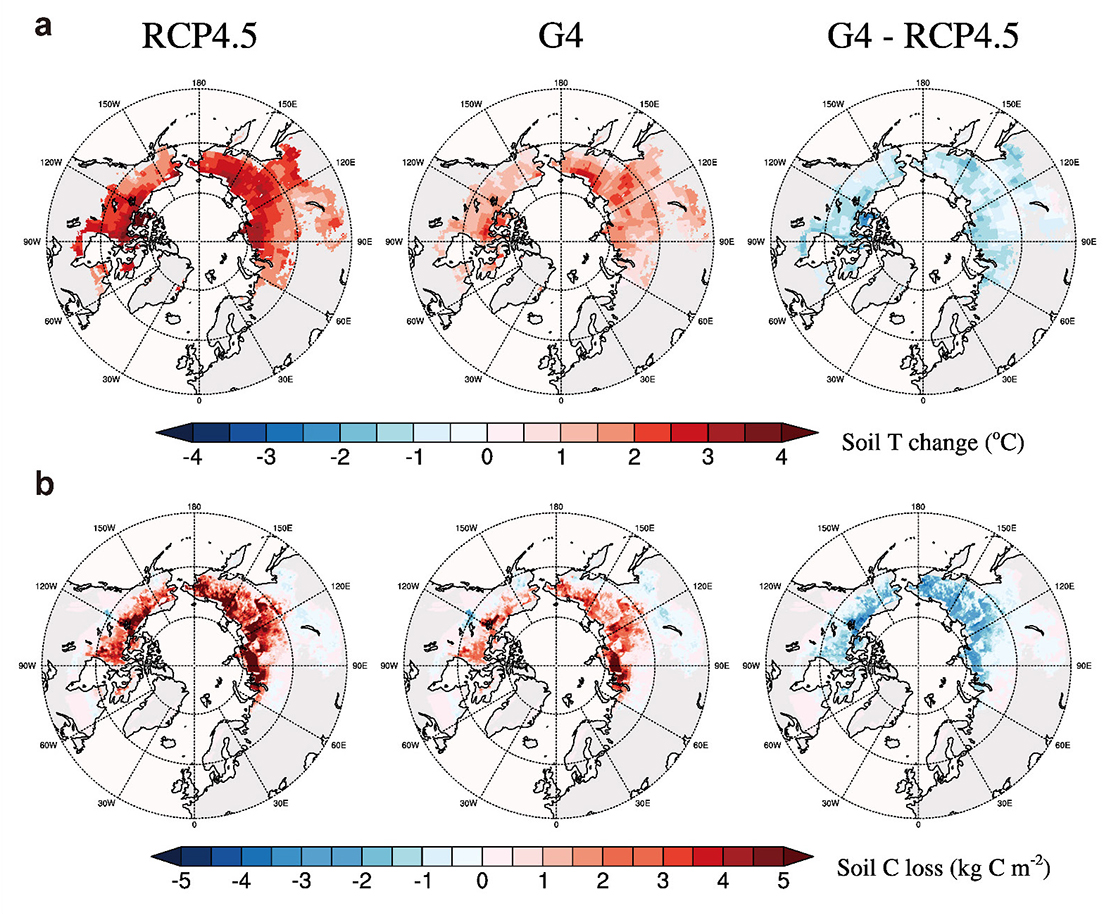The cost saved by the carbon kept in the permafrost alone would easily cover the cost of doing geoengineering by stratospheric aerosol injection, shows new research from Finnish and Chinese researchers, published in Nature Communications.
The research is led by professor John Moore of Arctic Centre, University of Lapland. In the study the group considered the change in Arctic permafrost over the next 50 years using a specific permafrost carbon model called “PInc-PanTher”.
In particular the researchers looked at a scenario that is similar to the agreements reached on emissions at Paris (RCP4.5), and a geoengineering scenario called G4 which specifies injection of sulphate aerosol into the stratosphere equivalent to one quarter of that from the 1991 Mt. Pinatibo volcano, for 50 years beginning in 2020.
The aerosol reduces the solar radiation warming the surface partially balancing increases in greenhouse gasses, keeping the surface cooler. The temperatures and the permafrost carbon model predict losses of carbon at both CO2 and methane from much of the Arctic permafrost over the next 50 years. The amount of greenhouse gases are released are roughly halved with geoengineering. “Of course the released carbon increases the greenhouse warming further accelerating permafrost melting”, says Professor Moore.
“We used an economic model to assess what the difference in costs from the carbon released from the permafrost would be for the global economy”, he says. The economic benefits by avoided keeping the carbon in the permafrost by the year 2069 would be about US$ 0.6 trillion per year, which even though enormous amounts to only about 1/20 to 1/25 of the total damage from warming.
The implementation costs of the doing this kind of geoengineering range from about US$0.05 trillion to US$0.4 trillion. “In other words, it might well cost less than the savings due only to permafrost carbon feedback”, says Moore.
“No one is advocating doing geoengineering on these results alone. They do though illustrate the kinds of impacts warming will have on different parts of the earth system. There may be some terrible consequences of doing geoengineering that we just don’t know about yet, but the consequences of even the mitigation efforts agreed at Paris will be bad enough to make Covid19 seem like a hiccup”, Moore comments.
The article “Mitigation of Arctic permafrost carbon loss through stratospheric aerosol geoengineering” is published in the Nature Communications on the 15th May 2020.
Additional information:
Professor John Moore, Arctic Centre, University of Lapland
john.moore.bnu@gmail.com
tel. +358 400 194 850

The cooling effect of geoengineering and projected soil carbon loss. Ensemble mean spatial distributions of (a) permafrost soil temperature change in the upper 3 m of soils between 2020 and 2069 under the emission scenario RCP4.5 and the geoengineering experiment G4, as well as the difference (G4 - RCP4.5), derived from the soil surface temperature outputs of 7 climate models after bias-correction and (b) permafrost soil C loss from PInc-PanTher between 2020 and 2069, integrated from surface to 3 m depth. By combining the compiled soil carbon maps with laboratory incubation syntheses, PInc-PanTher provides data-constrained estimates on the permafrost C response to imposed climatic warming